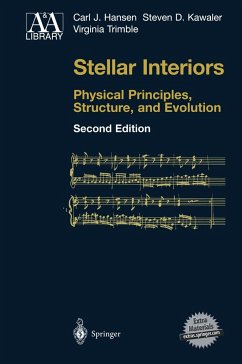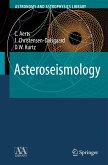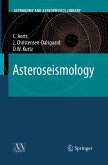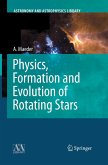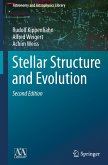This text, designed for beginning students of stellar physics, introduces the fundamentals of stellar structure and evolution. In emphasizing the general picture of the life cycles of stars and the physics responsible, it also allows prospective specialists a taste of many of the detailed aspects of this mature discipline. The authors develop a solid foundation in important theory that is often overlooked in typical courses, yet steer clear of extraneous intensive mathematics and physics. Topics include nuclear physics and stellar energy sources, the equation of state of stellar material, phenomenoligical approaches to convection, and modern numerical techniques for computation of stellar evolution. Keeping pace with recent developments, the authors incorporate important elements such as asteroseismology, and the effects of rotation and magnetic fields
The?rsteditionofthistextappearedin1994.Shortlyafterthethirdprinting, our editor suggested that we attempt a second edition because new devel- mentsinstellarstructureandevolutionhadmadeouroriginalworkoutdated. We (the original authors, CJH and SDK) reluctantly agreed but with res- vations due to the e?ort involved. Our initial reluctance disappeared when we were able to convince (cajole, twist the arm of, etc.) our new coauth- colleague Virginia Trimble to join us. (Welcome Virginia!) We (i.e., all three of us) hope that you agree that the present edition is a great improvement compared to the 1994 e?ort. Our objectives in this edition are the same ones we set forth in 1994: Whatyouwill?ndisatextdesignedforourtargetaudience:thety- cal senior undergraduate or beginning graduate student in astronomy or astrophysics who wishes an overview of stellar structure and e- lution with just enough detail to understand the general picture. She or he can go on from there to more specialized texts or directly to the research literature depending on talent and interests. To this end, this text presents the basic physical principles without chasing all the (interesting!) details. For those of you familiar with the ?rst edition, you will ?nd that some things have not been changed substantially (F = ma is still F = ma), while othersde?nitelyhave.Forexample,Chapter2hasbeencompletelyrewritten.
The?rsteditionofthistextappearedin1994.Shortlyafterthethirdprinting, our editor suggested that we attempt a second edition because new devel- mentsinstellarstructureandevolutionhadmadeouroriginalworkoutdated. We (the original authors, CJH and SDK) reluctantly agreed but with res- vations due to the e?ort involved. Our initial reluctance disappeared when we were able to convince (cajole, twist the arm of, etc.) our new coauth- colleague Virginia Trimble to join us. (Welcome Virginia!) We (i.e., all three of us) hope that you agree that the present edition is a great improvement compared to the 1994 e?ort. Our objectives in this edition are the same ones we set forth in 1994: Whatyouwill?ndisatextdesignedforourtargetaudience:thety- cal senior undergraduate or beginning graduate student in astronomy or astrophysics who wishes an overview of stellar structure and e- lution with just enough detail to understand the general picture. She or he can go on from there to more specialized texts or directly to the research literature depending on talent and interests. To this end, this text presents the basic physical principles without chasing all the (interesting!) details. For those of you familiar with the ?rst edition, you will ?nd that some things have not been changed substantially (F = ma is still F = ma), while othersde?nitelyhave.Forexample,Chapter2hasbeencompletelyrewritten.
From the reviews of the second edition: "This updated edition will be welcomed by the scientific community. ... gives an excellent general introduction to the subject. ...This book is especially suited for students in astrophysics and astronomy at the master level or starting a Ph.D. thesis, but also for post-graduate science students looking to enlarge their horizon." (Cyriel Wagemans, Physicalia, Vol. 57(3), 2005) "This book is aimed at senior undergraduate or early graduate students in astronomy ... . It provides a broad overview of the physical basics of stellar structure and evolution sufficient to whet the appetite of the student sufficiently ... . Recommended, yes, but only for serious students of stellar physics, as light reading, or a pretty picture book, it is not." (Roger Feasey, Journal of the Auckland Astronomical Society AAS, February, 2005)

